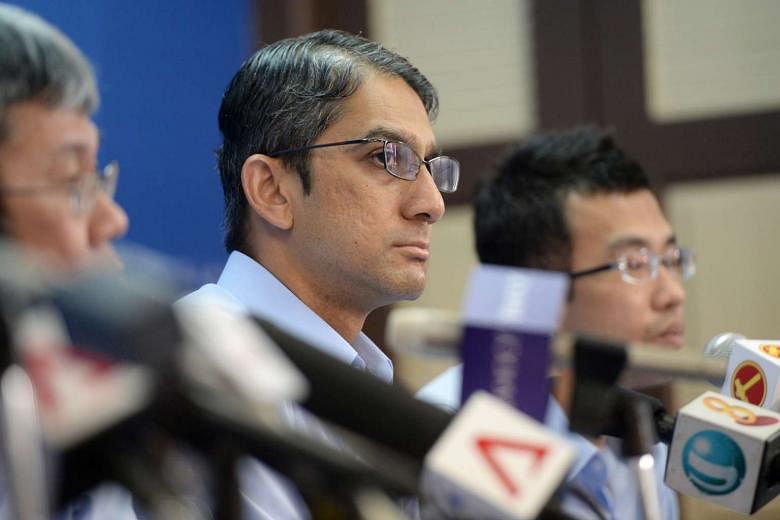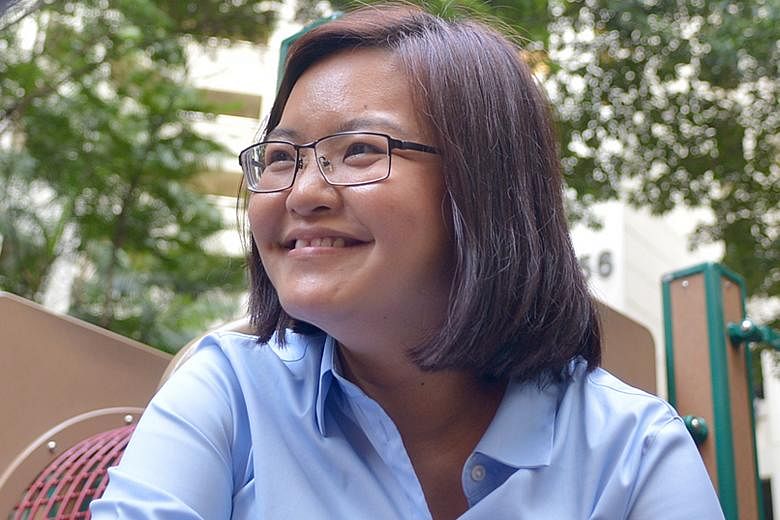If changes to the Non-Constituency MP (NCMP) scheme were in place in last year's General Election, Singapore would have 12 Workers' Party (WP) parliamentarians today, instead of nine.
Six would have been the people's choice in Aljunied GRC and Hougang. Another three would be the NCMPs as determined by the 2015 polls: Fengshan's Mr Dennis Tan, East Coast GRC's Mr Leon Perera and Punggol East's Ms Lee Li Lian.
That is the number currently allowed for under the Constitution, which provides for nine NCMPs, less the number of opposition MPs elected. Also, there can be no more than two NCMPs from one GRC.
With Ms Lee opting not to take up the NCMP seat, after much debate in Parliament on Friday, the way was paved for another candidate to occupy it - Associate Professor Daniel Goh, who was on the WP's four-man slate in East Coast GRC.
The remaining three NCMP seats would have gone to Sengkang West's Mr Koh Choong Yong, and two candidates from Marine Parade GRC, where the WP team was led by former NCMP Yee Jenn Jong.
All this is, of course, hypothetical. But it would have certainly made for an interesting Parliament term as the 83 People's Action Party (PAP) MPs would have found themselves facing more WP MPs.
Not only that, but the opposition NCMPs would have had the same voting rights as their elected peers.
It is no wonder that the proposed NCMP expansion has been a hot topic since it was announced by Prime Minister Lee Hsien Loong last Wednesday.
Indeed, WP found itself in an unenviable position last Friday, after moving a motion to ask Parliament to give the NCMP seat vacated by Ms Lee to Prof Goh.
The PAP seized on it as an opportunity to make a point about the WP's criticism of the proposed increase in NCMP number: The WP ended up enduring a humiliating amendment by the PAP.
It noted as part of the amendment that the WP "supports this political manoeuvre to take full advantage of the NCMP seat, even as its secretary-general criticises NCMPs as just 'duckweed on the water of a pond".
Last Wednesday night, WP chief Low Thia Khiang likened NCMPs to duckweed - tiny plants that float on water - as they lack both political muscle and grassroots grounding.
The scheme itself was introduced in 1984 to allow the best-performing opposition party losers in a general election to still make it to Parliament, thus ensuring a minimum number of opposition MPs.
But while many have given it the thumbs up, some have raised questions. Will the changes actually strengthen the two-party system? And will they actually satisfy the people's desire for more voices?
STRENGTHENING THE TWO-PARTY SYSTEM
The changes can be seen as a clever reversal of the opposition's oft-used "two for one" campaign, where a resident gets two people "serving" him if he votes for them. What it boils down to: having the opposition MP as an alternative voice while benefiting from PAP policies.
But under the changes, a resident desiring a check on the PAP can confidently vote for it, with the knowledge that there would be a bigger opposition presence in the House.
But is this the sort of politics Singapore should be working towards?
Would it create the stabilising two-party system that observers have argued is a necessary part of the evolution of politics in a maturing society?
To a cynic, the changes are a careful move by the PAP to dilute the role of an opposition MP: someone who keeps the Government in check, and nothing more.
But WP's Mr Low gave an alternative view of "good politics" last Thursday, arguing that the outcome should not just be good policy and a lack of gridlock - as Mr Lee had suggested - but a resilient political system.
WP member and former NCMP Yee Jenn Jong tells The Sunday Times that it is not healthy for Singapore to have only one party with a near-absolute majority, with alternative voices coming in by way of the scheme.
"Every politician should aim to get the full mandate of the people, every party should work towards becoming a credible alternative to the PAP government," he says.
"We cannot guarantee that the ruling party will always be strong or run the country well. We don't want to be in a situation where both the ruling and opposition parties are weak."
Another former NCMP, the National Solidarity Party's Mr Steve Chia, says the system benefits primarily the incumbent. Through NCMPs, it allows the party to hear the needs of the 30 to 40 per cent of the population who did not vote for it - yet without giving NCMPs any political heft.
"Even if a PAP backbencher did raise critical, alternative ideas, the PAP is more likely to sit up when something is highlighted by a non-PAP MP," Mr Chia argues.
The PAP's attempt to paint both types of MPs as equal is disingenuous, said Mr Low last Friday.
That is because the NCMPs do not have the elected authority to represent the people, or access to resources like community club venues, as these come under the purview of the People's Association, a statutory board.
Ms Lee Li Lian said in a Facebook post that as an NCMP, she would not be able to represent voters on the ground, and cited how her application to hold a charity food distribution event in Punggol East yesterday was turned down by the PAP-run town council.
Then there is a worry that, with PM Lee promising more single-seat wards at the next election and the opposition's tendency to divvy up the battlegrounds, the opposition will fight to become second-best - scraping by with just enough votes to become NCMPs.
ALTERNATIVE VOICES?
At the end of the day, the NCMP scheme affects only the composition of Parliament.
So if it is diversity in terms of non-PAP MPs that one is looking for, then the increase in NCMP numbers goes one step towards achieving that, says former PAP MP Alvin Yeo. "But if you're trying to focus on the quality of debate, then I'm not sure increasing the number of NCMPs would fulfil that purpose," he says.
At the same time, if changes were implemented in time for the 2015 elections, all the NCMPs would have come from the WP, prompting questions about whether this is true diversity.
After all, like the PAP, the WP has its own internal whip, where individual MPs are unlikely to stray far from the party line.
Some supporters of the smaller opposition parties have also described the WP as "PAP-lite". Over the last term, many observers have criticised the WP's elected MPs for what they perceived to be a disappointingly tame performance in Parliament.
Historically, the number of elected MP seats has also increased at every election to reflect the growing population.
This means the guaranteed minimum of 12.5 per cent opposition representation in Parliament would likely remain far short of the proportion of opposition supporters - 30 per cent in GE 2015.
But there is also the question of whether the increase in NCMP seats would just create diversity in numbers, without actually adding to it qualitatively.
POLITICALLY MATURE MOVE
So why would the PAP still go through with this? Some argue that it's the long-sighted, politically mature step to take.
After all, the PAP came close to making a clean sweep of all the seats at the last election. Against the backdrop of its disappointing 2011 GE result, it won an unexpected 69.9 per cent of the vote share, wrested Punggol East from the WP and almost claimed back Aljunied GRC with less than a percentage point to go.
Increasing the number of NCMPs while the PAP "was not under threat politically" was a good way to institutionalise a sufficient number of plural voices in the House, says Chua Chu Kang GRC MP Zaqy Mohamad.
Still, dominance in the House is not necessarily a bad thing: The PAP ran a swift and efficient political machine from 1965 to 1981, when then WP chief J. B. Jeyaretnam became the first opposition MP.
But a lack of representation would not be acceptable to today's electorate, especially for the 30 per cent of the population wondering where their champions in the House are.
Former Nominated MP Shriniwas Rai said the changes showed political maturity, as PM Lee was "prepared to take the risk" and face a louder, larger opposition to scrutinise his Government's policies.
Addressing concerns that voters would feel less need to choose opposition members as a check and balance, Singapore Management University psychology professor David Chan says their perception and assessment of the parties and candidates would still be the critical factors influencing an election result.
There are also undeniable benefits to the scheme.
The increase of three seats may seem small, but can make a substantial difference for the opposition if it performs well in Parliament, especially given the low base of the current nine seats, he says.
"At the least, there will be more opportunities to raise issues," he says.





